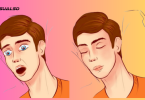Heart attack symptoms vary from person to person. The most obvious of these symptoms are:

- Chest pain:
– Often described as a feeling of pressure and heaviness extending to the arms and jaw. - Shortness of breath:
– Difficulty breathing or feeling of tightness in the chest. - Nausea and vomiting:
Chest pain can be accompanied by nausea and vomiting. - Fatigue and exhaustion:
– A feeling of tiredness for no reason, even without effort. - Hand cramps:
– Tingling and cramping in hands. Risk factors: - Smoking:
Choosing a vision for him is one of the most important. - High blood pressure:
– Increases the risk of heart attack. - Diabetes:
– Increases the risk of heart disease. - High cholesterol:
– Contribute to the formation of platelet adhesion on the side of the artery. - Family history:
A family history of heart disease is a risk factor. - Age:
– Age income - Obesity:
– It is a risk factor that can be avoided by improving lifestyle. - Lack of activity:
– There is a risk of sitting for a long time and not moving. - Stress and psychological pressure:
– They play a role in increasing the risk of heart attack. Best methods: - Lifestyle changes:
– Improve diet
And regularly.

- Stop smoking:
– Reduces the risk of consequences. - Health control:
– Regular monitoring of blood pressure and cholesterol levels. - Diabetes control:
– Regular monitoring and control of diabetes. - Weight control:
The burden of consolidating the heart’s workload. - Dealing with stress:
– Practice meditation and relaxation techniques. Conclusion:
A heart attack is a serious health challenge that requires awareness and effective health care. Accommodation is “extra” style and they check in on time. If the heart symptoms continue, medical treatment is necessary to help provide health care, because with quick action, the doctor can survive and make all the collections.
PrevNext






